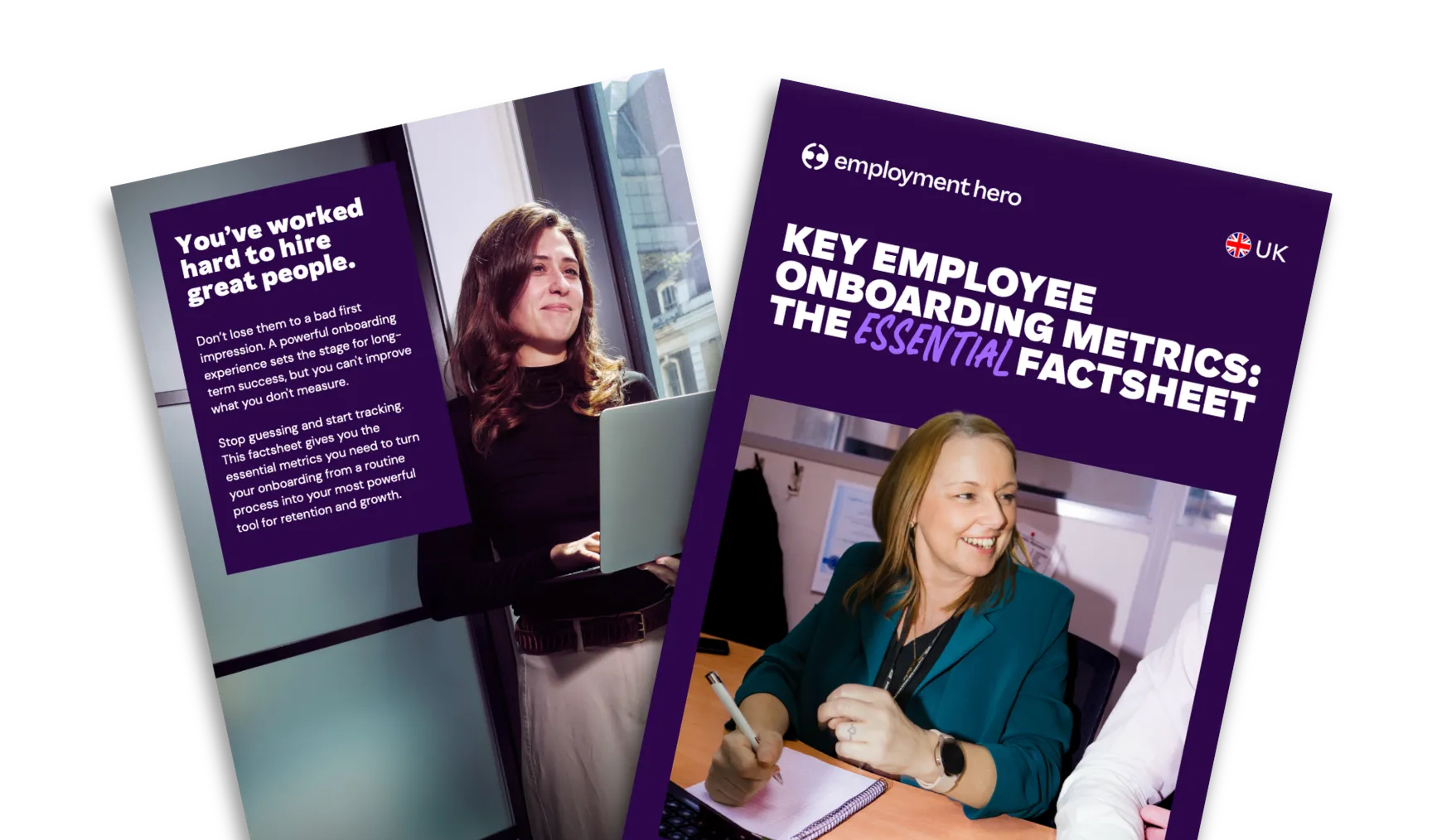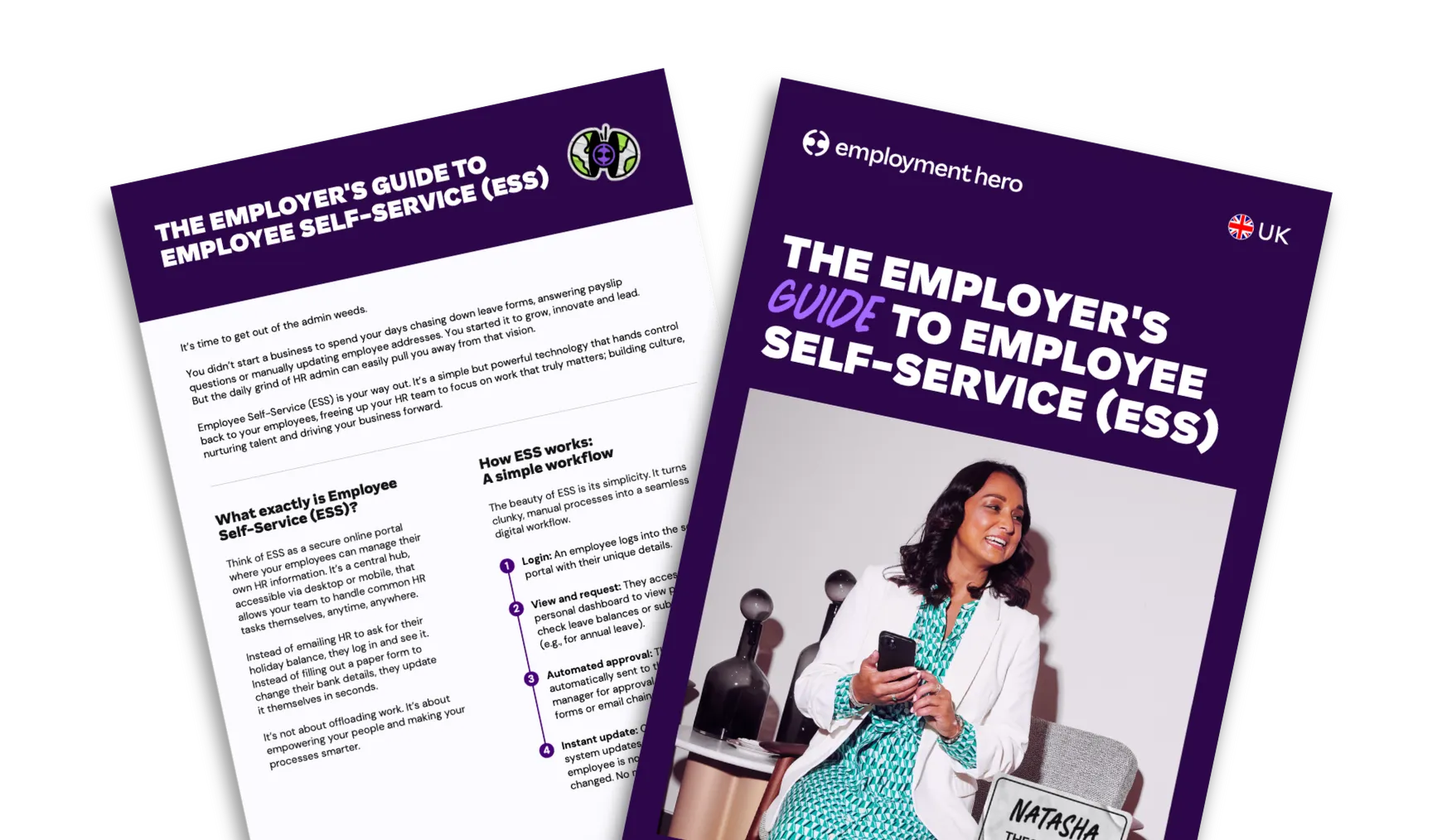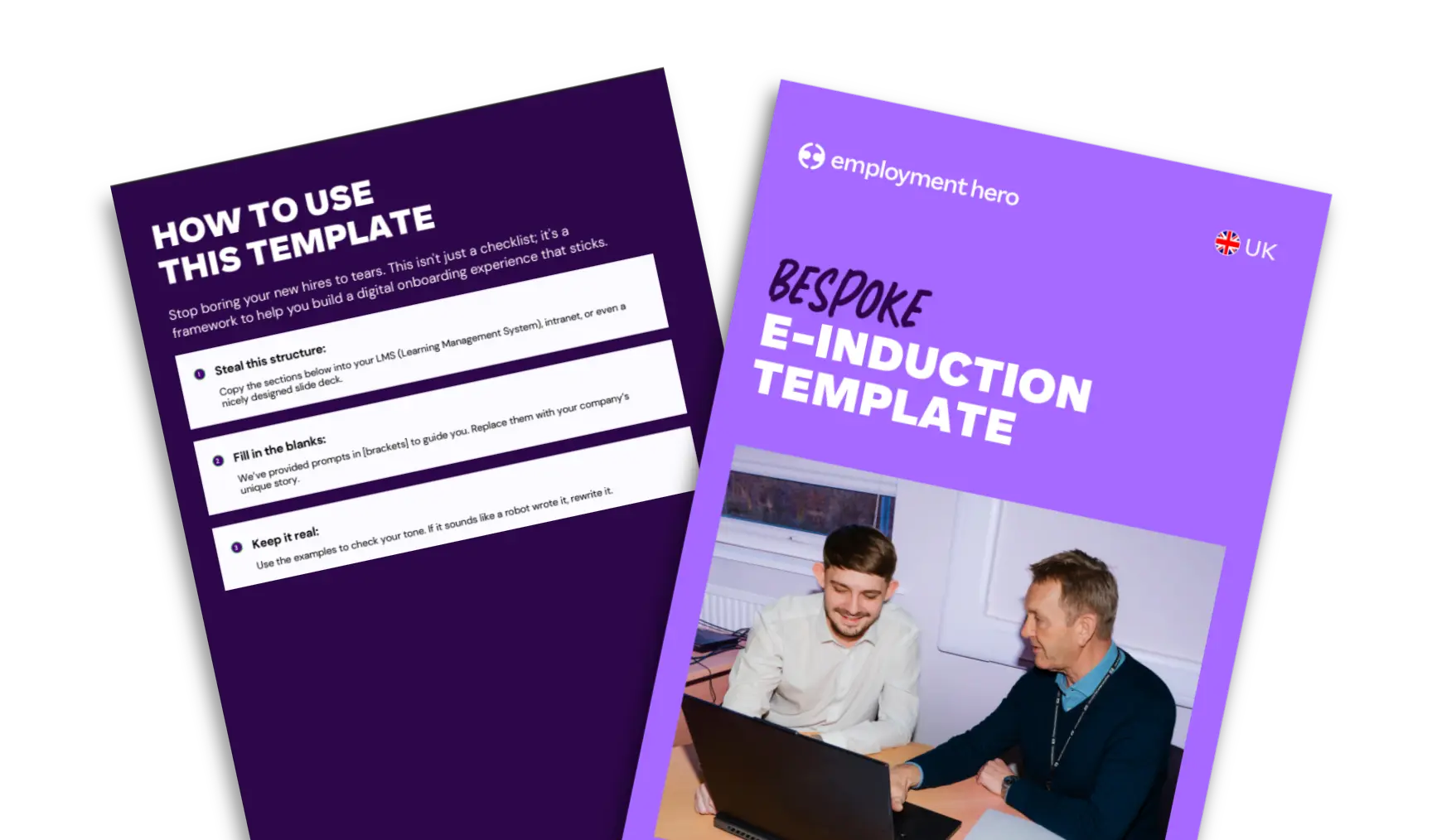UK tax free childcare scheme: What employers need to know
Published
UK tax free childcare scheme: What employers need to know
Published
Supporting your team through life’s biggest moments, like parenthood, is a powerful way to build a loyal and engaged workforce. However, navigating the landscape of employee benefits, especially government schemes, can feel like a minefield. The UK’s Tax-Free Childcare (TFC) scheme is a game-changer for working parents, yet many employers are unsure about what it is, how it works and what their role should be.
We’ll break down exactly what you need to know about the Tax-Free Childcare scheme, clarify your responsibilities (spoiler: they’re minimal) and show you how promoting it can become a cornerstone of your employee support strategy.
What is in this factsheet?
Time is your most valuable asset. That’s why we’ve created a comprehensive factsheet to give you the essential facts about the UK’s Tax-Free Childcare scheme. It’s designed to be your quick-reference tool, helping you understand how the system works and how you can confidently support your employees who are balancing careers and family life.
Download your copy today.
Now, let’s start with the basics and define exactly what this scheme offers your team.
What is Tax-Free Childcare?

Tax-Free Childcare (TFC) is a UK government scheme designed to help working parents with the cost of childcare. It’s not a voucher system and it isn’t run through employers. Instead, it’s a straightforward online account that an employee sets up and manages themselves.
The mechanics are simple: for every £8 an employee pays into their TFC online account, the government adds an extra £2. This is equivalent to a 20% top-up on their childcare savings, the same rate as basic rate tax. The government will top up a maximum of £2,000 per child per year (or £4,000 for a child with a disability). This means parents can receive support on childcare costs up to £10,000 a year per child (£20,000 for a disabled child).
This money can be used to pay for approved childcare, including childminders, nurseries, nannies, after-school clubs and holiday play schemes. It’s an employee-led initiative, meaning you, as the employer, have no administrative tasks to perform. Your role is simply to be a source of information and support.
This modern scheme replaced an older system, which often causes confusion. Let’s clarify the key distinctions.
What is the difference between Tax-Free Childcare and childcare vouchers?
It’s crucial to understand that Tax-Free Childcare and the old Childcare Voucher scheme are two entirely different systems. Childcare Vouchers were an employer-led benefit, operated through a salary sacrifice arrangement. Employees gave up a portion of their pre-tax salary in exchange for vouchers of the same value, saving them money on tax and National Insurance.
Key differences include:
- Administration: Vouchers were run by employers. TFC is run by the government and managed directly by the employee.
- Savings: Vouchers provided tax savings at the employee’s marginal rate. TFC provides a 20% top-up from the government, regardless of the parent’s tax bracket.
- Eligibility: TFC has different eligibility criteria, including a requirement for both partners to be working (in a couple) and a cap on individual earnings.
- Value: The value of voucher savings was capped weekly or monthly. TFC savings are capped annually at £2,000 per child.
Understanding these differences is especially important because the Childcare Voucher scheme is no longer available to new applicants.
Is the childcare voucher scheme closed as of October 2018?
Yes, the Childcare Voucher scheme closed to new entrants on the 4th of October 2018. No new applications have been accepted since that date. Employees who were already members of a scheme on or before the cut-off date could continue to receive vouchers as long as they stayed with the same employer and the employer continued to run the scheme.
If an employee who was in a scheme leaves the company, they lose their eligibility and cannot rejoin another voucher scheme. They would need to look at applying for Tax-Free Childcare instead. This cut-off has direct implications for how you manage your payroll and benefits. As a manager, keeping track of these legacy benefits is just one part of running an effective payroll, which is why having robust systems is essential. You can find more insights on what HR managers should know from these useful payroll statistics.
So, what does this hard stop on the old scheme mean for your business today?
How does the October 2018 cut-off affect employers?
For most employers, the 2018 cut-off simplifies things. You cannot offer Childcare Vouchers to any new hires or to any existing employees who weren’t already signed up before the deadline. Your only responsibility is to continue administering the scheme for any “legacy” employees who remain enrolled.
This means you must continue making the salary sacrifice deductions from their pay and passing the funds to your voucher provider. It’s crucial that these deductions are accurately reflected on their payslips, showing the salary sacrifice clearly. For all other employees, the conversation should now be focused entirely on the Tax-Free Childcare scheme.
This naturally leads to the question of what your role should be in this new landscape.
Do employers have a role in the Tax-Free Childcare scheme?

While you have no formal administrative role in the TFC scheme, you have a vital part to play. Your role is one of communication and support. By proactively educating your employees about the scheme, you can add significant value and position your company as a supportive and family-friendly workplace.
Many working parents are not aware the scheme exists or are confused about how it works. You can help by:
- Sharing information about TFC on your company intranet or in newsletters.
- Directing employees to the official government website for eligibility checks and applications.
- Explaining that it is an employee-led system and they manage it themselves.
Promoting this benefit demonstrates a commitment to your team’s wellbeing beyond their desk. Think of it less as a task and more as a powerful tool for boosting employee morale and retention. Of course, a benefit is only useful if your employees are eligible to receive it.
Who is eligible for Tax-Free Childcare?
The eligibility criteria for TFC are specific and apply to the employee, not the employer. To qualify, an employee (and their partner, if they have one) must:
- Be in work (employed or self-employed).
- Each expect to earn at least the National Minimum Wage or Living Wage for 16 hours a week over the next three months.
- Each has an individual adjusted net income of no more than £100,000 a year.
- Not receiving support through Tax Credits or Universal Credit.
The scheme is available for children who are 11 or under. They stop being eligible on the 1st of September after their 11th birthday. For children with disabilities, the age limit is extended to 16 and the annual government top-up increases to £4,000.
The rule about other benefits is a critical one, as choosing the wrong scheme could leave an employee worse off.
How will Tax-Free Childcare affect Tax Credits or Universal Credit?
An employee cannot claim Tax-Free Childcare at the same time as receiving Working Tax Credit, Child Tax Credit or Universal Credit. If an employee applies for and receives TFC, their Tax Credit or Universal Credit claim will be stopped automatically.
This is a crucial point to communicate. For some families, especially those on lower incomes or with higher childcare costs, the support available through Universal Credit’s childcare element may be more generous than what TFC offers. Employees must work out which scheme is better for their personal circumstances. You can support them by directing them to the government’s online benefits calculator, which is designed to help them make an informed choice.
The rules around legacy benefits and life events like parental leave also bring up common questions.
Will employees be able to receive childcare vouchers after returning from maternity leave?
This is a common point of confusion. If an employee was part of your Childcare Voucher scheme before going on maternity leave, they can usually continue receiving vouchers upon their return to work. The key is that they must have remained an active member of the scheme.
Some employers choose to keep providing vouchers during maternity leave (as they are a non-cash benefit), while others may pause them. As long as the employee did not formally opt out of the scheme before the October 2018 cut-off, their membership is preserved. However, if they were not in the scheme before the deadline, they cannot join now and must use Tax-Free Childcare instead. You can read more about handling different types of benefits, including the old workplace childcare vouchers, to ensure you are compliant.
Navigating these complexities is where having the right systems and support makes all the difference.
How can Employment Hero help?

Supporting your team means more than just processing their pay; it means providing them with the tools and information they need to thrive both in and out of work. While Tax-Free Childcare is employee-led, your role as an informed employer is invaluable. Ensuring your payroll is accurate, compliant and clearly communicates every deduction and benefit is fundamental to building trust.
Employment Hero’s powerful payroll software automates complex calculations and gives your employees self-service access to their payslips and employment data, fostering transparency and confidence. Our comprehensive payroll guide can help you master the essentials of payroll management.
Ready to become a champion for your working parents?
Download our free Tax-Free Childcare factsheet to share with your team and explore how Employment Hero can transform your payroll and HR processes from a burden into a strategic advantage.
To download the factsheet, we just need a few quick details.
Related Resources
-
 Read more: Key Employee Onboarding Metrics and KPIs to Track
Read more: Key Employee Onboarding Metrics and KPIs to TrackKey Employee Onboarding Metrics and KPIs to Track
Discover the top onboarding metrics and KPIs every UK employer should track, and how to measure the success of your…
-
 Read more: What is Employee Self-Service (ESS)? How It Works & Employer Benefits
Read more: What is Employee Self-Service (ESS)? How It Works & Employer BenefitsWhat is Employee Self-Service (ESS)? How It Works & Employer Benefits
Learn how Employee Self-Service (ESS) simplifies HR admin, empowers staff to manage their data and frees your HR team to…
-
 Read more: How to Create Bespoke E-Inductions For New Hires And Contractors
Read more: How to Create Bespoke E-Inductions For New Hires And ContractorsHow to Create Bespoke E-Inductions For New Hires And Contractors
Learn how to design bespoke e-inductions for new hires and contractors. Discover flexible, learner-centred solutions to improve onboarding and retention.



















